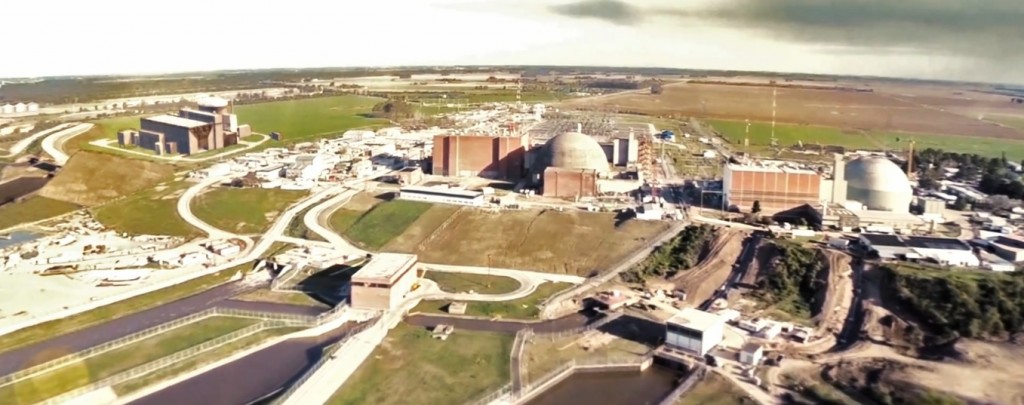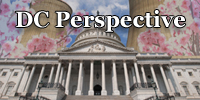A message from NV5, Inc.
Seconds Matter: Rethinking Nuclear Facility Security for the Modern Threat Landscape

A message from NV5, Inc.
Seconds Matter: Rethinking Nuclear Facility Security for the Modern Threat Landscape
Shortly before midnight on September 26, 1944, a sustained chain reaction was begun for the first time in a nuclear reactor whose purpose was not merely to prove that fission could be achieved or sustained. The brand new reactor at Hanford Engineer Works, Washington state, had only been complete for about a month; its first uranium fuel had begun loading only on September 13. Incredibly, this facility, of a nature that had never been attempted before (as man had only been aware of fission, itself, for less than a decade) was built in the incredible time span of 11 months; ground had been broken to build the reactor building in October 1943.

Atucha I and II at right; artist's concept of Atucha III at left. RIght-most unit is Atucha I. Courtesy Nucleoelectrica Argentina S.A.
Nucleoelectrica Argentina S.A. announced in July that it had entered into a contract with China National Nuclear Corporation to build a Chinese-sourced version of the traditional Canadian CANDU reactor at its Atucha site. This 800-MWe plant will be the fourth at the site (already occupied by two Siemens pressurized heavy water reactor plants, and the just-begun CAREM Small Modular Reactor plant) and the nation's fifth nuclear plant overall (adding in the CANDU plant at Embalse.) This new unit will be Argentina's most powerful nuclear unit, topping Embalse by 200 MWe.
 The 227th Carnival of Nuclear Bloggers and Authors has been published at The Hiroshima Syndrome.
The 227th Carnival of Nuclear Bloggers and Authors has been published at The Hiroshima Syndrome.
• This week the GE-Hitachi ESBWR design received its Design Certification from the Nuclear Regulatory Commission.
In August 2014, the U.S. Nuclear Regulatory Commission approved NUREG-2157, Generic Environmental Impact Statement for Continued Storage of Spent Nuclear Fuel. That action was the end result of several years worth of detailed analysis of the known and uncertain impacts of storing used nuclear fuel on the earth's surface in licensed and monitored facilities.
Nuclear Regulatory Commission Chairman Allison Macfarlane today fielded questions from in-person and virtual attendees at a live, unscripted 60-minute webinar on nuclear energy issues. The event-"Bloggers' Roundtable"-was held in Washington, DC, and was a collaborative effort of the NRC and the American Nuclear Society. The webinar provided an opportunity for nuclear bloggers and social media personalities to discuss the NRC's perspectives on a wide range of nuclear-related issues.
 The 225th Nuclear Energy Blog Carnival is being hosted this week right here at the ANS Nuclear Cafe. Every week, the world's top pro-nuclear authors and bloggers submit the most popular or most important articles from that week; the selections are then compiled at one of a set of rotating sites and featured as the "Carnival." Let's jump right in to this week's significant contributions.
The 225th Nuclear Energy Blog Carnival is being hosted this week right here at the ANS Nuclear Cafe. Every week, the world's top pro-nuclear authors and bloggers submit the most popular or most important articles from that week; the selections are then compiled at one of a set of rotating sites and featured as the "Carnival." Let's jump right in to this week's significant contributions.
I'd like to take this opportunity to ask you a question: Have you considered attending the American Nuclear Society's Winter Meeting yet? Before you answer, I'd like to give you a few compelling reasons to do so from my own personal experience.
 The 224th edition of the Carnival of Nuclear Bloggers and Authors has been posted at Things Worse Than Nuclear Power. Click here to see this latest installment in a long running tradition among pro-nuclear authors and bloggers.
The 224th edition of the Carnival of Nuclear Bloggers and Authors has been posted at Things Worse Than Nuclear Power. Click here to see this latest installment in a long running tradition among pro-nuclear authors and bloggers.
I recently attended a Safeguards Education Roundtable at the Argonne National Laboratory sponsored by the Next Generation Safeguards Initiative (NGSI). University professors and nonproliferation experts from U.S. national laboratories met at this event to discuss safeguards education at universities. The goal of NGSI is to "to develop the policies, concepts, technologies, expertise, and infrastructure necessary to sustain the international safeguards system" as it evolves in the future. A major pillar of the program is developing the next generation of professionals to work in the nonproliferation and safeguards field-and to make sure that the next generation of nuclear professionals is aware of nonproliferation and safeguards issues.
The American Nuclear Society will host an online webinar for nuclear bloggers-an unscripted question-&-answer session with Nuclear Regulatory Commission Chairman Allison Macfarlane-on Thursday, September 11, 2014, from 9 AM-10 AM Eastern Time
 The 223rd edition of the Carnival of Nuclear Bloggers has been posted at Next Big Future. You can click here to access this latest post in a long running tradition among pro-nuclear authors and bloggers.
The 223rd edition of the Carnival of Nuclear Bloggers has been posted at Next Big Future. You can click here to access this latest post in a long running tradition among pro-nuclear authors and bloggers.
Dr. Edward Calabrese recently published a paper titled The Genetics Panel of the NAS BEAR I Committee (1956): epistolary evidence suggests self‐interest may have prompted an exaggeration of radiation risks that led to the adoption of the LNT cancer risk assessment model.
For too long, graduate students have been inadvertently marginalized due to a lack of status recognition in the American Nuclear Society, but those days are now past. The ANS Board of Directors has unanimously approved the joint Student Sections Committee (SSC)/Young Members Group (YMG) proposal to offer free YMG membership to graduate students. This is a great day for all Young Members, regardless of whether they're still in graduate school or not.
The Environmental Protection Agency's proposed Clean Power Plan has gained favor with some nuclear energy advocates. An extensive analysis of the proposal, however, reveals that current nuclear generating capacity would largely suffer under the new carbon rules. In fact, the results of an evaluation performed by my fellow graduate student Justin Knowles and myself show that 15 states are actually incentivized to shut down all of their nuclear units and replace them with natural gas combined cycle (NGCC) generation. In effect, this plan allows for increasing carbon emissions; a far cry from the stated goals of the Clean Power Plan.
 In January, the U.S. Environmental Protection Agency issued an Advanced Notice of Proposed Rulemaking (ANPR) concerning 40 CFR 190-the regulations that govern public exposure and release of radioactive materials resulting from normal nuclear power plant operations (it does not pertain to nuclear accidents). The public comment period for the proposed rulemaking ended on August 3.
In January, the U.S. Environmental Protection Agency issued an Advanced Notice of Proposed Rulemaking (ANPR) concerning 40 CFR 190-the regulations that govern public exposure and release of radioactive materials resulting from normal nuclear power plant operations (it does not pertain to nuclear accidents). The public comment period for the proposed rulemaking ended on August 3.
 The 222nd edition of the Carnival of Nuclear Bloggers and Authors has been posted at Atomic Insights. You can click here to access the latest installment in a long running tradition among pro-nuclear authors and bloggers.
The 222nd edition of the Carnival of Nuclear Bloggers and Authors has been posted at Atomic Insights. You can click here to access the latest installment in a long running tradition among pro-nuclear authors and bloggers.
Got a minute (and 22 seconds)? Catch a quick update on the first new commercial nuclear energy in the United States of the 21st century-in Tennessee.